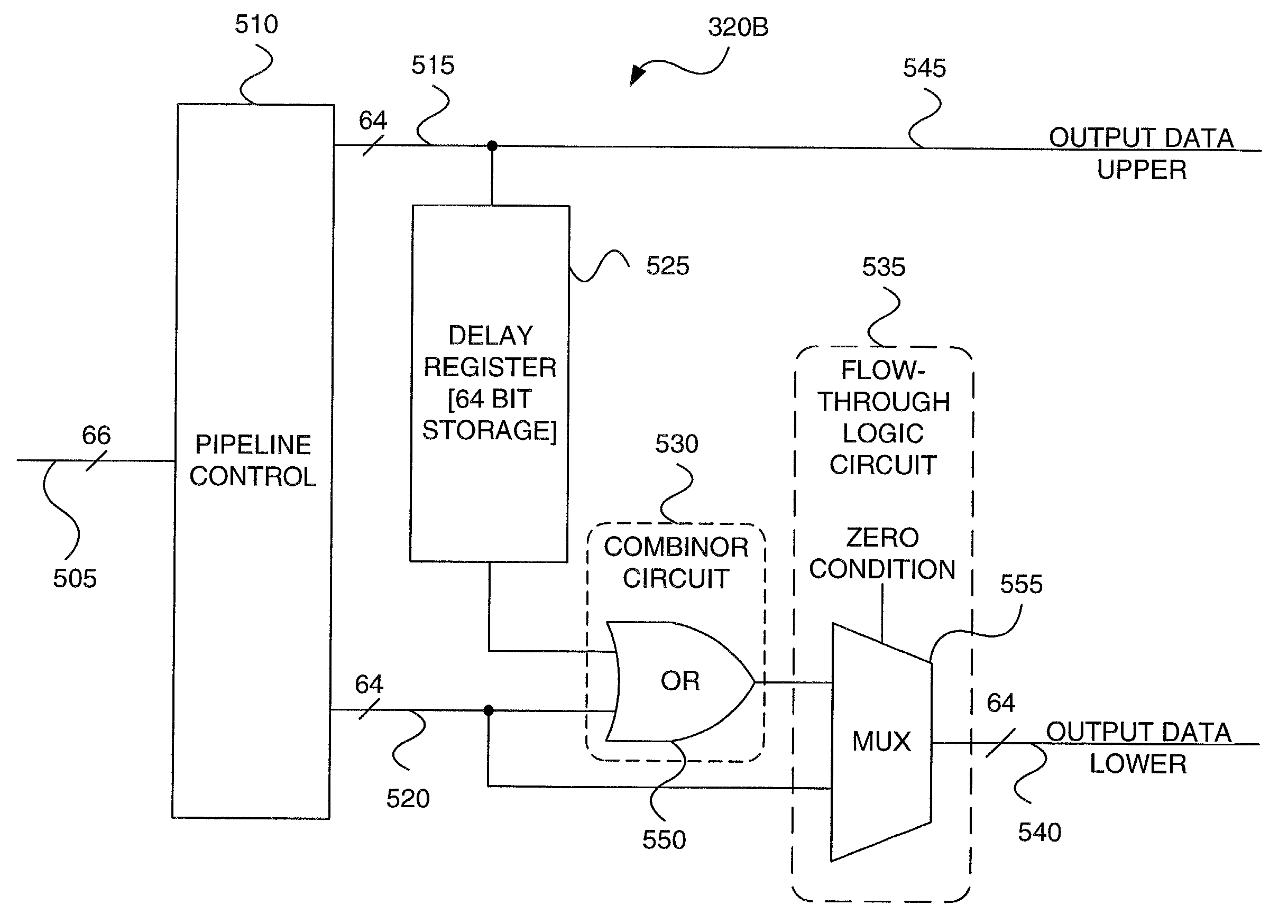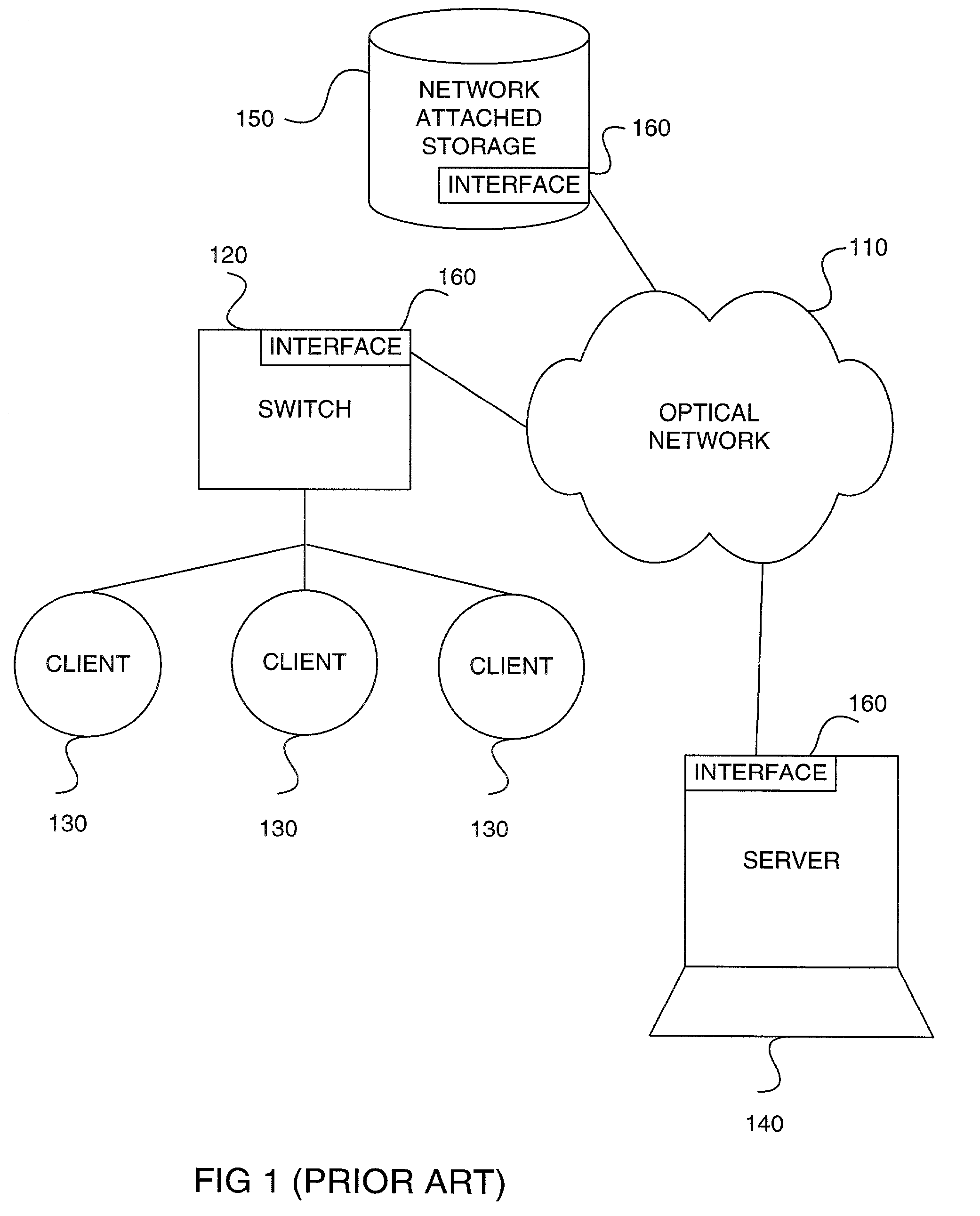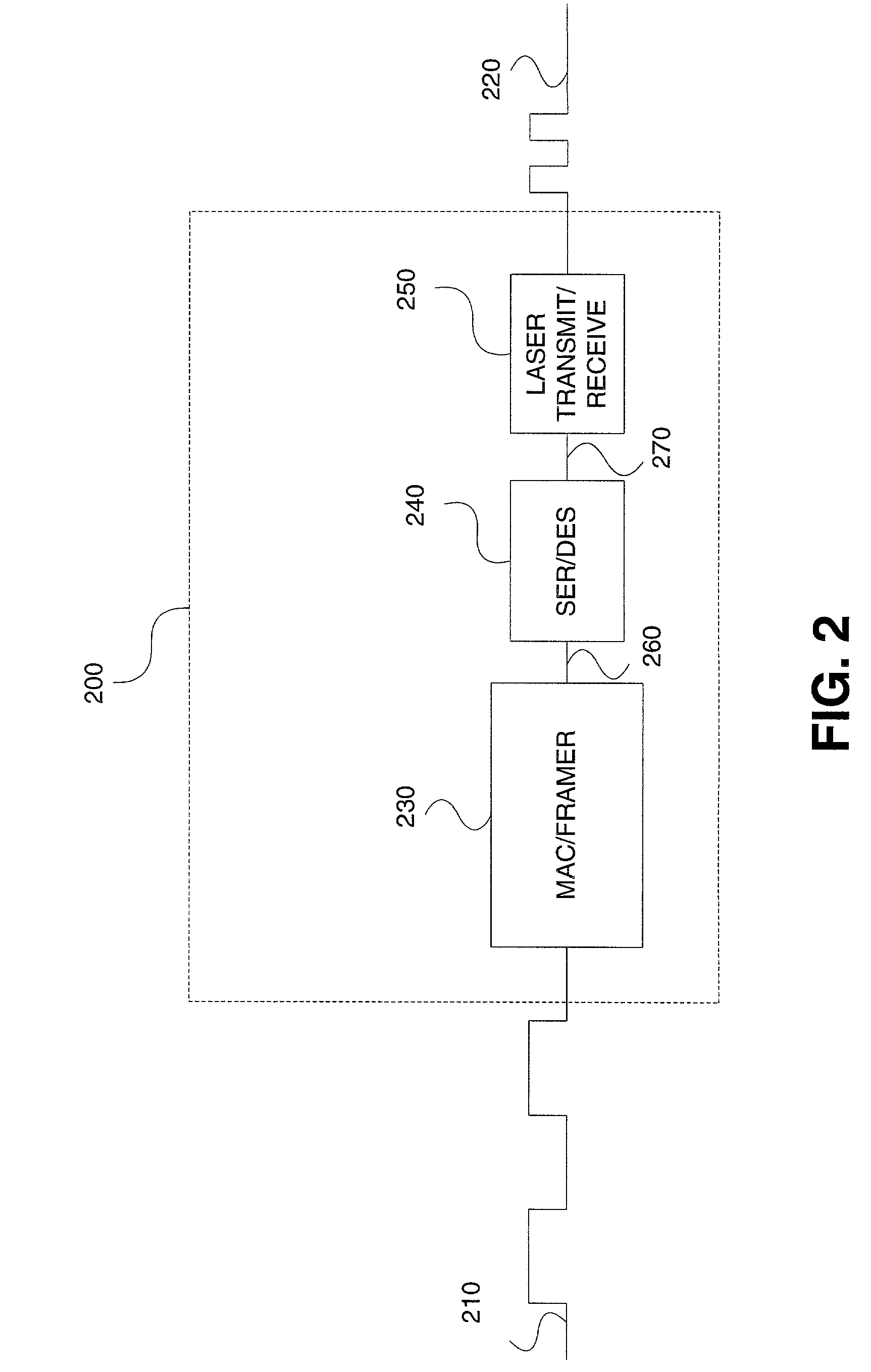Multistage pipeline bit conversion
a multi-stage pipeline and bit conversion technology, applied in the field of communication over networks, can solve the problem that old interface circuits b>160/b> cannot be readily adapted for use with the new standard
- Summary
- Abstract
- Description
- Claims
- Application Information
AI Technical Summary
Benefits of technology
Problems solved by technology
Method used
Image
Examples
Embodiment Construction
[0029]FIG. 2 shows an interface circuit 200 that allows devices to transmit information over optical network 110 by converting a 64-bit unencapsulated signal 210 at a first clock rate to an optical signal 220 at a second clock rate. Interface circuit 200 includes a MAC / framer circuit 230, a serializer / deserializer circuit 240, and a laser transmit / receive circuit 250.
[0030]During a transmit operation, MAC / framer circuit 230 receives 64-bit unencapsulated signal 210 from the device attempting to communicate data over optical network 110, encapsulates the data in accordance with Ethernet protocols, and prepares the data for transmission over optical network 110. An output signal 260 from MAC / framer circuit 230 is also 64 bits wide, but travels at an intermediate clock rate that is faster than 64-bit unencapsulated signal 210 and includes both the original data and the encapsulation information.
[0031]Serializer / deserializer circuit 240 transforms output signal 260 from a 64-bit paralle...
PUM
 Login to View More
Login to View More Abstract
Description
Claims
Application Information
 Login to View More
Login to View More - Generate Ideas
- Intellectual Property
- Life Sciences
- Materials
- Tech Scout
- Unparalleled Data Quality
- Higher Quality Content
- 60% Fewer Hallucinations
Browse by: Latest US Patents, China's latest patents, Technical Efficacy Thesaurus, Application Domain, Technology Topic, Popular Technical Reports.
© 2025 PatSnap. All rights reserved.Legal|Privacy policy|Modern Slavery Act Transparency Statement|Sitemap|About US| Contact US: help@patsnap.com



